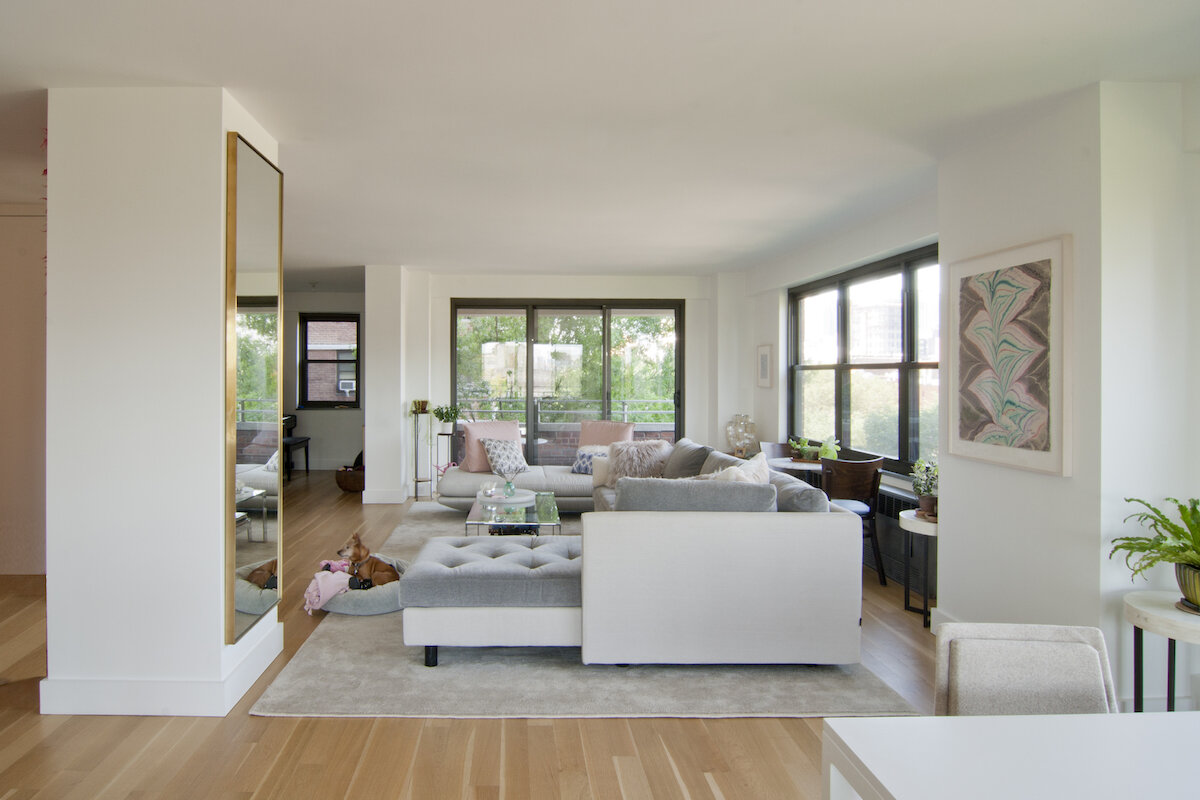Photo by Andrew Ridley on Unsplash
I’d love to learn more about using color in feng shui.
This is a popular topic! Laura and I actually just recorded a whole podcast episode about feng shui and color. I’ll share a few ideas about this here, and if you want to dive deeper, I would encourage you to check out the episode.
One way to approach feng shui and color is to look at how colors relate to the bagua map. The bagua map, in case you aren’t familiar, is a kind of energetic map that feng shui practitioners lay over a space. It has eight areas around a center.
Something that I noticed recently is the connection between the center of a flower and the center of the bagua. The bagua is a mandala, just like a flower can be. The center of the bagua, called the Tai qi, is yellow, which is often true for the center of flowers as well. In feng shui, yellow represents the earth element. Earth is connected to stability and feeling grounded, and the center of the bagua affects all of the areas that surround it.
One of the most popular areas of the bagua is the purple area, or the abundance area. It’s called Xun position in Chinese. In addition to abundance, it’s related to the eldest daughter and your feelings of wealth and prosperity, which go beyond financial wealth. It’s also about having a feeling of abundance, a feeling of enough. It’s the opposite of a poverty mentality. Xun is also deeply related to self-esteem and self-worth.
Purple is also the combination of red, which is the fire element, and blue, which is the wood element. (There’s a misconception that blue is the water element, but it actually represents wood in BTB feng shui.) Purple brings together the kindness, flexibility and growth of wood with the inspiration, passion, and protection of fire. This makes purple a wonderful color to work with in your home, if these ideas resonate with you. Some easy ways to incorporate purple into your home are through small decor accents, like a throw pillow or blanket.
Sometimes people think that you need to paint a whole room the color that corresponds to the feng shui bagua map. The way that I teach my students at Mindful Design Feng Shui School is to realize that you don’t want to activate every single area of the bagua map. Not only is it unnecessary, but the I Ching, which is one of the foundations of feng shui, teaches that there’s no such thing as perfection. Everything is always in transition and always moving. If you try to make everything perfect, the only place to go from there is down, so aiming for perfection will actually work against you. Painting your walls according to the bagua map is also not the most skillful way to work with this tool, and it probably won’t work very well from a design perspective.
Another way to work with feng shui and color is to make your own art and explore different shades of a color. If you want to work with purple, for example, it’s really fun to get a watercolor palette and create purple with red (fire) and blue (wood), and see how these work together. Make it a fun, exploratory activity, and see how that correlates with your feelings of abundance. Once you’ve made some purple art, you might want to place it in the abundance area of your bedroom.
I hope that helps you as you’re thinking about feng shui and color, and if you want to learn more, be sure to listen to the podcast!
If you’d like to learn more about feng shui, check out Mindful Design Feng Shui School at: www.mindfuldesignschool.com





